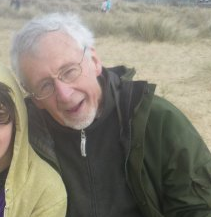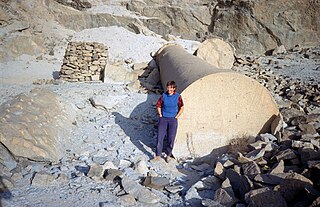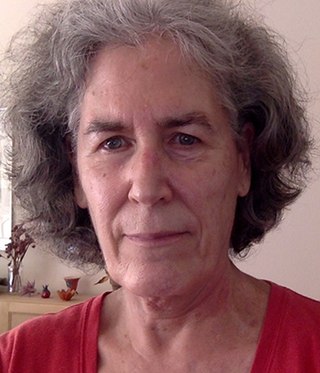Related Research Articles

Wheat is a grass widely cultivated for its seed, a cereal grain that is a staple food around the world. The many species of wheat together make up the genus Triticum ; the most widely grown is common wheat. The archaeological record suggests that wheat was first cultivated in the regions of the Fertile Crescent around 9600 BC. Botanically, the wheat kernel is a caryopsis, a type of fruit.

Einkorn wheat can refer either to a wild species of wheat (Triticum) or to its domesticated form. The wild form is T. boeoticum, and the domesticated form is T. monococcum. Einkorn is a diploid species of hulled wheat, with tough glumes ('husks') that tightly enclose the grains. The cultivated form is similar to the wild, except that the ear stays intact when ripe and the seeds are larger. The domestic form is known as "petit épeautre" in French, "Einkorn" in German, "einkorn" or "littlespelt" in English, "piccolo farro" in Italian and "escanda menor" in Spanish. The name refers to the fact that each spikelet contains only one grain.

Domestication is a multi-generational mutualistic relationship in which an animal species, such as humans or leafcutter ants, takes over control and care of another species, such as sheep or fungi, to obtain from them a steady supply of resources, such as meat, milk, or labor. The process is gradual and geographically diffuse, based on trial and error.

Paleoethnobotany, or archaeobotany, is the study of past human-plant interactions through the recovery and analysis of ancient plant remains. Both terms are synonymous, though paleoethnobotany is generally used in North America and acknowledges the contribution that ethnographic studies have made towards our current understanding of ancient plant exploitation practices, while the term archaeobotany is preferred in Europe and emphasizes the discipline's role within archaeology.

The founder crops or primary domesticates are a group of flowering plants that were domesticated by early farming communities in Southwest Asia and went on to form the basis of agricultural economies across Eurasia. As originally defined by Daniel Zohary and Maria Hopf, they consisted of three cereals, four pulses, and flax. Subsequent research has indicated that many other species could be considered founder crops. These species were amongst the first domesticated plants in the world.
Lallemantia oil is a seed oil, extracted from the seeds of the Lallemantia iberica. It contains 68% linolenic acid, making it an unusually rich source, and of potential commercial interest. Lallemantia oil has been discovered at a number of archeological sites in northern Greece, dating from the Bronze Age. As the plant is not native to this region, the presence of this oil suggests that it was imported from further east.

Gordon Hillman was a British archaeobotanist and academic at the UCL Institute of Archaeology. He has been described as "a pivotal figure in the development of archaeobotany at the Institute of Archaeology at University College London, [who] through his research, publications and teaching had a major influence on the field worldwide."
Kristen Johnson Gremillion is an American anthropologist whose areas of specialization include paleoethnobotany, origins of agriculture, the prehistory of eastern North America, human paleoecology and paleodiet, and the evolutionary theory. Currently a professor in the Department of Anthropology at the Ohio State University and editor of the Journal of Ethnobiology, she has published many journal articles on these subjects.
Iraq ed-Dubb, or the Cave of the Bear, is an early Neolithic archeological site 7 km (4.3 mi) northwest of Ajlun in the Jordan Valley, in modern-day Jordan. The settlement existed before 8,000 BCE and experimented with the cultivation of founder crops, side by side with the harvesting of wild cereals. Along with Tell Aswad in Syria, the site shows the earliest reference to domestic hulled barley between 10,000 and 8,800 BCE. The site is located on a forested limestone escarpment above the Wadi el-Yabis in northwest Jordan. An oval-shaped stone structure was excavated along with two burials and a variety of animal and plant remains.
Triticum araraticum is a wild tetraploid species of wheat. T. araraticum is one of the least studied wheat species in the world.
George Willcox is an archaeobotanist who specialises in the origins of agriculture in the Near East. He has been employed as researcher with the CNRS France since 1989. He has dual French and British nationality. He studied environmental archaeology under the late Prof. Dimbleby at the Institute of Archaeology in London during the early 1970s and was then employed as environmental archaeologist by the Museum of London. In 1977 he married and left his job to follow his interest in Near Eastern archaeobotany. An interest which he had acquired as an undergraduate working with Gordon Hillman in Turkey. During the next few years he worked in Turkey, Afghanistan Jordan, Oman, Kuwait, Tajikistan, India and Syria and started amassing a charred archaeobotanical collection and modern reference collection. These are now housed at the Muséum national d’Histoire naturelle in Paris. It was during this somewhat precarious period that he moved to France and founded a family. In 1984 Gordon Hillman introduced George to Jacques Cauvin and Patrica Anderson at the CNRS Institut de Préhistore Orientale in south east France where they developed a project on experimentally cultivating wild cereals In 1989 George entered the CNRS working on a number of early Neolithic sites in Syria in particular with Danielle Stordeur at Jerf el Amhar. He lectured at several French universities on archaeobotany and the origins of agriculture and supervised post graduate students. He was an associate editor for Vegetation History and Archaeobotany for many years and received an honorary doctorate from the University of Basel in 2013. His 117 scholarly publications are a measure of his research achievements. In 2014 with statutory retirement the CNRS awarded George the status of "Directeur de Recherche Emérite, CNRS" which allows him to continue to supervise students, sit on PhD panels, peer review manuscripts and carry out field work.
Amy Bogaard FBA is a Canadian archaeologist and Professor of Neolithic and Bronze Age Archaeology at the University of Oxford.

Marijke van der Veen, is a Dutch archaeobotanist and Emeritus Professor of Archaeology at the University of Leicester.

Naomi Miller is an archaeobotanist who works in western and central Asia. Miller is based at the University of Pennsylvania.
Stefanie Jacomet is professor of archaeobotany at Basel University. Her research focuses on investigating wetland sites in Central Europe and developing archaeobotanical methodologies.
The International Work Group for Palaeoethnobotany (IWGP) is an informal, international collective of archaeobotanists, with the main goal of establishing and maintaining international communication and collaboration by a series of conferences. These conferences focus mainly, but not exclusively, on the study of plant macrofossils in order to reconstruct past subsistence, trade, construction, ritual, and the environment.

Lisa Ann Lodwick was a British archaeologist who studied charred, mineralised and waterlogged macroscopic plant remains, and used carbon and nitrogen stable isotope analysis to understand the crop husbandry practices of the ancient Romans.
Keith M. Dobney is a British archaeologist and academic, specialising in bioarchaeology and palaeopathology of human and animal remains. Since 2020, he has been Head of the School of Philosophical and Historical Inquiries at the University of Sydney. He previously worked at the Institute of Archaeology, the University of York, the University of Durham, the University of Aberdeen, and the University of Liverpool.

The Department of Archaeology at the University of Sheffield, UK, is an academic department providing undergraduate and postgraduate courses in archaeology and its sub-disciplines based in the city of Sheffield, South Yorkshire. It conducts archaeological associated research with several dedicated research centres. It was founded in 1976, stemming from early archaeology programs in the 1960s as one of the first universities in the UK with a dedicated Department of Archaeology.
Meriel McClatchie is an archaeologist specialising in archaeobotany. She is an associate professor at University College Dublin.
References
- 1 2 3 Sheffield, University of. "Jones, G - Our Staff - Archaeology - The University of Sheffield". www.sheffield.ac.uk. Retrieved 2018-07-29.
- 1 2 3 "Professor Glynis Jones". British Academy. Retrieved 27 July 2018.
- ↑ Jones, Glynis (1987). "A statistical approach to the archaeological identification of crop processing". Journal of Archaeological Science. 14 (3): 311–323. Bibcode:1987JArSc..14..311J. doi:10.1016/0305-4403(87)90019-7. ISSN 0305-4403.
- ↑ Jones, G.; Charles, M.; Bogaard, A.; Hodgson, J. (2010). "Crops and weeds: the role of weed functional ecology in the identification of crop husbandry methods". Journal of Archaeological Science. 37 (1): 70–77. Bibcode:2010JArSc..37...70J. doi:10.1016/j.jas.2009.08.017. ISSN 0305-4403.
- ↑ Jones, G.; Charles, M. P.; Jones, M. K.; Colledge, S.; Leigh, F. J.; Lister, D. A.; Smith, L. M. J.; Powell, W.; Brown, T. A. (2013). "DNA evidence for multiple introductions of barley into Europe following dispersed domestications in Western Asia". Antiquity. 87 (337): 701–713. doi:10.1017/S0003598X00049401. ISSN 0003-598X. S2CID 85778364.
- ↑ "Portrait of an inspirational woman: Professor Glynis Jones". University of Sheffield. Retrieved 27 July 2018.
- ↑ Valamoti, Soultana M.; Bittmann, Felix (2014-12-09). "Proceedings of the 16th conference of the International Work Group for Palaeoethnobotany, Thessaloniki 2013". Vegetation History and Archaeobotany. 24 (1): 5–7. doi: 10.1007/s00334-014-0505-8 . ISSN 0939-6314.
- ↑ Jones, G.; Baxevani, K.; Halstead, P. (1982). "Save seeds". Anthropologika. 3: 86–87.
- ↑ "Journal of Archaeological Science - Editorial Board". Journal of Archaeological Science. Retrieved 27 July 2018.